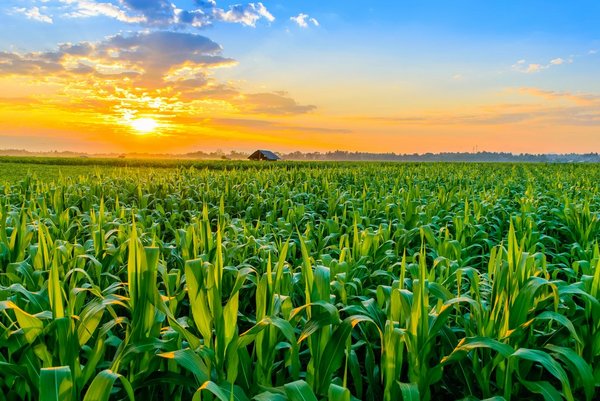- Share this article
- Subscribe to our newsletter
COP26 – The role of agriculture in climate protection
On the one hand, the agriculture sector is responsible for a high amount of greenhouse gas (GHG) emissions, with agri-food systems causing 31 per cent of total global emissions. On the other hand, the agriculture sector is itself strongly impacted by climate change at an early stage.
The Food and Agriculture Organization of the United Nations (FAO) sheds a light on the role of agriculture in climate protection at the UN Climate Change Conference of the Parties’ (COP26) in Glasgow, UK, early November 2021.
Agriculture is the main driver of deforestation
Agricultural expansion drives almost 90 per cent of global deforestation – an impact much greater than previously thought, FAO stated at COP26.
Deforestation is the conversion of forest to other land uses, such as agriculture and infrastructure. Worldwide, more than half of forest loss is due to conversion of forest into cropland, whereas livestock grazing is responsible for almost 40 per cent of forest loss, according to the new study.
Agriculture remains the main driver of deforestation in all regions except for Europe, where urban and infrastructure development have a higher impact, the study says. Conversion to cropland dominates forest loss in Africa and Asia, with over 75 per cent of the forest area lost converted to cropland. In South America, almost three quarters of deforestation is due to livestock grazing.
The new data also confirms an overall slowdown in global deforestation while warning that tropical rainforests, in particular, are under high pressure from agricultural expansion.
Climate action in agribusiness could reduce emissions by up to 7 per cent
Targeted action in agriculture could have a massive impact on climate change, according to a joint brief by the Investment Centre of FAO and the European Bank for Reconstruction and Development (EBRD) presented at COP26.
The mitigation potential of crop and livestock activities, including soil carbon sequestration and better land management, is estimated at 3 to 7 per cent of total anthropogenic emissions by 2030. The potential economic value of mitigating these emissions could amount to USD 60 billion to USD 360 billion, the two institutions say.
The brief highlights the huge potential for engaging food and land-use systems in the fight against climate change. It also shows how the agriculture sector is uniquely placed to be part of the carbon neutral solution through reducing emissions, while maximizing its potential to act as a carbon sink by absorbing more carbon from the atmosphere than it releases. A full report will be published early 2022.
Growing emissions from food supply chains
The food supply chain is on course to overtake farming and land use as the largest contributor to greenhouse gases (GHGs) from the agri-food system in many countries, due to rapid growth driven by food processing, packaging, transport, retail, household consumption, waste disposal and the manufacturing of fertilizers, according to new data presented by FAO at COP26.
Factors unrelated to on-farm activities and land-use changes already account for more than half of the carbon dioxide emissions from agri-food systems in advanced regions, and their share has more than doubled over the past three decades in developing countries.
Agri-food-system GHG emissions from Asia, the world’s most populous region, are by far the greatest, followed by Africa, South America, Europe, North America and Oceania.
However, the study found that GHG missions from pre- and post-production phases of the food-supply chain accounted for more than half of the agri-food system total in both Europe and North America, while the figure was below 14 per cent for Africa and South America.
(FAO/ile)
More information at FAO website:
Supply chain joins deforestation and farming practices as main source of emissions in agri-food sector
COP26: Agricultural expansion drives almost 90 percent of global deforestation
Climate action in agribusiness could reduce emissions by up to 7 per cent





Add a comment
Comments :